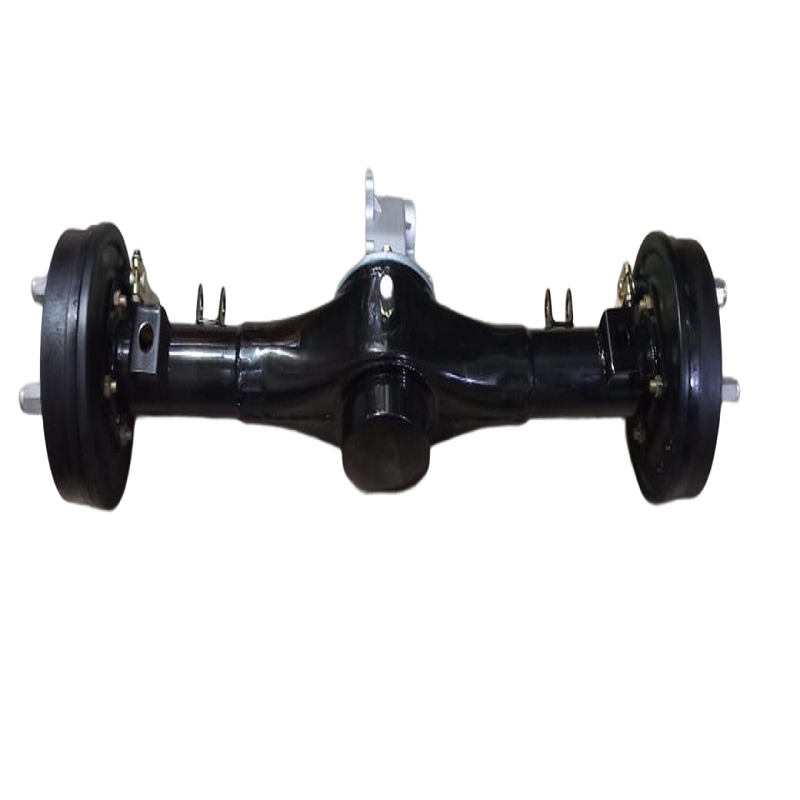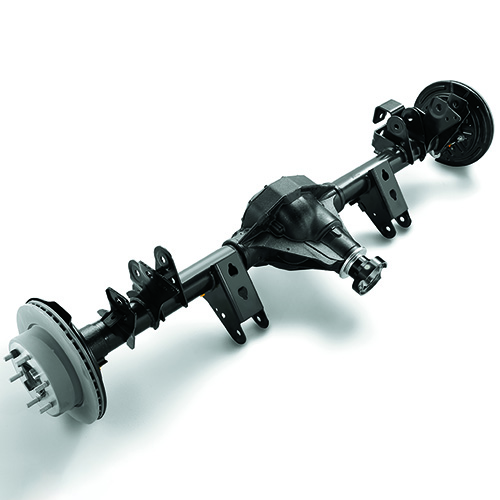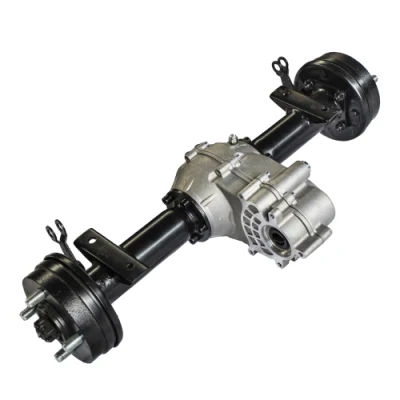Product Description
Product Description
Tapered roller bearings are separable bearings, and the inner and outer rings of the bearing have tapered raceways. This type of bearing is divided into different structural types such as single row, double row and 4 row tapered roller bearings according to the number of rows of rollers installed. Single row tapered roller bearings can bear radial loads and axial loads in 1 direction. When the bearing bears the radial load, an axial component force will be generated, so another bearing that can bear the axial force in the opposite direction is needed to balance it.
Detailed Photos
Product Parameters
| Type: | Tapered Roller Bearing |
| Weight: | Standard weight |
| Specifications: | Standard size |
| Material: | Chrome steel GCR-15 |
| CAGE: | Steel Cage |
| Rolling body: | Roller |
| Features | Long life and high quality |
| High precision , low noise with strict controling of the quality | |
| High loading by the advanced high-technical design | |
| Most competitive price , factory direct | |
| OEM service offered ,to meet the customer's requrements | |
| Price Terms | EXW, FOB, CFR, CIF |
| Package | Plastic bags+cartons+pallet Tube package+cartons+pallet Customize according to your needs |
Certifications
Company Profile
ZheJiang CHINAMFG Bearing Manufacturing Co., Ltd. is a professional manufacturer of bearing with high bearing capacity, integrating research and development, design, production and sales.
We "take the customer as the center, to provide customers with market competitive bearings" for the development of principle, from the inception has insisted on independent technology, promoting innovation and development, with excellent product quality and excellent service for the enterprise to build the good reputation, the company specializing in the production of tapered roller bearings, automobile wheel hub bearings and spherical roller bearings, customized 0 to 9 class a variety of criteria Non-standard bearings, The products are exported to Europe, Russia, United Arab Emirates, Singapore, Australia and other countries.
Application & Feature
1. Operation of bearing inner ring;
2. Sometimes, aluminum scrap will enter the bearing inside gearbox;
3. Has a high load carrying capacity, and is able to withstand a certain degree
of axial impact load. Need to ensure the service life of bearings under a high
load;
4. Initially, bearings lubricated by grease, and later use oil to lubricate. Sealing
performance requirements are relatively not very high, but not allow iron and
aluminum scrap entering bearings.
Our Advantages
1.Free samples,fast delivery
2.Small order accepted
3.OEM service welcome
4.Customers' drawing or samples accepted
5.Excellent and high quality control,high speed low noise,long life
6. Our price can according to the customers' requirements and your market demand
FAQ
1.How many is the MOQ of your company?
Our company MOQ is 1pcs.
2.Could you accept OEM and customize?
YES, OEM is accepted and we can customize for you according to sample or drawing.
3.How about the corner?
In stocks,some are white ,and some are black.
But we can process the white corner to black,also black to white.
4.Do you have stocks?
YES, we have most of the bearings showing on alibaba in stock,especialy big bearings.
5.Do you have only big bearings?
We have big,medium and small bearings in stock.But large bearing is the advantage
of our products compared with other companies.
| Designation | Dimensions | Basic Load Ratings | Limiting Speed | Mass | |||||||
| d | D | T | B | C | r1 | r | Cr | Cor | |||
| min. | min. | Dynamic | Static | ||||||||
| SFT | mm | kN | Rpm | g | |||||||
| 35713 | 17 | 40 | 13.25 | 12 | 11 | 1 | 1 | 20.7 | 21.9 | 9000 | 79 |
| 30303 | 17 | 47 | 15.25 | 14 | 12 | 1 | 1 | 28.3 | 27.2 | 8500 | 129 |
| 35714 | 20 | 47 | 15.25 | 14 | 12 | 1 | 1 | 28.2 | 30.6 | 8000 | 126 |
| 30304 | 20 | 52 | 16.25 | 15 | 13 | 1.5 | 1.5 | 33.1 | 33.2 | 8000 | 165 |
| 35715 | 25 | 52 | 16.25 | 15 | 13 | 1 | 1 | 32.2 | 37 | 7500 | 154 |
| 30305 | 25 | 62 | 18.25 | 17 | 15 | 1.5 | 1.5 | 46.9 | 48.1 | 6700 | 263 |
| 35716 | 30 | 62 | 17.25 | 16 | 14 | 1 | 1 | 43.3 | 50.5 | 6300 | 231 |
| 30306 | 30 | 72 | 20.75 | 19 | 16 | 1.5 | 1.5 | 59 | 63.1 | 5600 | 387 |
| 35717 | 35 | 72 | 18.25 | 17 | 15 | 1.5 | 1.5 | 54.2 | 63.5 | 5300 | 331 |
| 30307 | 35 | 80 | 22.75 | 21 | 18 | 2 | 1.5 | 75.3 | 82.6 | 5000 | 515 |
| 35718 | 40 | 80 | 19.75 | 18 | 16 | 1.5 | 1.5 | 63 | 74 | 4800 | 422 |
| 30308 | 40 | 90 | 25.25 | 23 | 20 | 2 | 1.5 | 90.9 | 107.6 | 4500 | 747 |
| 35719 | 45 | 85 | 20.75 | 19 | 16 | 1.5 | 1.5 | 67.9 | 83.6 | 4500 | 474 |
| 30309 | 45 | 100 | 27.25 | 25 | 22 | 2 | 1.5 | 108.9 | 129.8 | 4000 | 984 |
| 35710 | 50 | 90 | 21.75 | 20 | 17 | 1.5 | 1.5 | 73.3 | 92.1 | 4300 | 529 |
| 3571 | 50 | 110 | 29.25 | 27 | 23 | 2.5 | 2 | 130.1 | 157.1 | 3600 | 1280 |
| 35711 | 55 | 100 | 22.75 | 21 | 18 | 2 | 1.5 | 90.8 | 113.7 | 3800 | 713 |
| 3571 | 55 | 120 | 31.5 | 29 | 25 | 2.5 | 2 | 153.3 | 187.6 | 3200 | 1630 |
| 35712 | 60 | 110 | 23.75 | 22 | 19 | 2 | 1.5 | 103.3 | 130 | 3400 | 904 |
| 3571 | 60 | 130 | 33.5 | 31 | 26 | 3 | 2.5 | 171.4 | 210 | 3000 | 1990 |
| 35713 | 65 | 120 | 24.75 | 23 | 20 | 2 | 1.5 | 120.6 | 152.6 | 3000 | 1130 |
| 3571 | 65 | 140 | 36 | 33 | 28 | 3 | 2.5 | 195.9 | 241.7 | 2600 | 2440 |
| 35714 | 70 | 125 | 26.25 | 24 | 21 | 2 | 1.5 | 132.3 | 173.6 | 3000 | 1260 |
| 3571 | 70 | 150 | 38 | 35 | 30 | 3 | 2.5 | 21.9 | 271.7 | 2400 | 2980 |
| Taper Roller Bearing | |||||||
| 35713 | 32304 | 33026 | 32005 | 30305 | 33011 | 33212 | 32206 |
| 35714 | 32305 | 33571 | 32006 | 30306 | 33012 | 33213 | 32207 |
| 35715 | 32306 | 33030 | 32007 | 30307 | 33013 | 33214 | 32208 |
| 35716 | 32307 | 33108 | 32008 | 30308 | 33014 | 33215 | 32209 |
| 35717 | 32308 | 33109 | 32009 | 30309 | 33015 | 33216 | 32210 |
| 35718 | 32309 | 33110 | 32571 | 3571 | 33016 | 33217 | 32211 |
| 35719 | 32310 | 33111 | 32011 | 3571 | 33017 | 33218 | 32212 |
| 35710 | 32311 | 33112 | 32012 | 3571 | 33018 | 33219 | 32213 |
| 35711 | 32312 | 33113 | 32013 | 3571 | 33019 | 33220 | 32214 |
| 35712 | 32313 | 33114 | 32014 | 3571 | 33571 | 33221 | 32215 |
| 35713 | 32314 | 33115 | 32015 | 3571 | 33571 | 32904 | 32216 |
| 35714 | 32315 | 33116 | 32016 | 3 0571 | 33571 | 32905 | 32217 |
| 35715 | 32316 | 33117 | 32017 | 3 0571 | 33571 | 32906 | 32218 |
| 35716 | 32317 | 33118 | 32018 | 3 0571 | 31311 | 32907 | 32219 |
| 35717 | 32318 | 33119 | 32019 | 3571 | 31312 | 32908 | 32220 |
/* January 22, 2571 19:08:37 */!function(){function s(e,r){var a,o={};try{e&&e.split(",").forEach(function(e,t){e&&(a=e.match(/(.*?):(.*)$/))&&1

What is the impact of towing on the rear differential, and are there recommended upgrades for towing applications?
Towing can have a significant impact on the rear differential of a vehicle, as it places additional stress and load on the drivetrain components. The rear differential is responsible for transferring torque from the engine to the rear wheels, and when towing, it must handle the increased weight and forces involved. Here's a detailed explanation of the impact of towing on the rear differential and some recommended upgrades for towing applications:
- Increased Load:
- Heat Generation:
- Torque and Power Delivery:
- Recommended Upgrades:
- Heavy-Duty Differential: Consider upgrading to a heavy-duty rear differential specifically designed for towing applications. These differentials are built with stronger gears, larger bearings, and reinforced housings to handle the increased load and torque demands of towing.
Towing adds a substantial amount of weight to the vehicle, which directly affects the rear differential. The increased load can cause higher levels of stress and strain on the differential gears, bearings, and other internal components. Over time, this added stress can lead to accelerated wear and potential damage if the differential is not adequately equipped to handle the towing load.
Towing places additional demands on the rear differential, resulting in increased heat generation. The added weight and increased torque required to move the load can cause the differential fluid to heat up more quickly. Excessive heat can degrade the fluid's lubricating properties and accelerate wear on the differential components. It is crucial to monitor the differential temperature and ensure that the fluid is capable of withstanding the towing workload.
Towing applications often require a higher amount of torque and power delivery from the rear differential. Depending on the vehicle and towing capacity, the differential may need to transfer a significant amount of torque to the rear wheels. This increased torque can put additional strain on the differential gears, bearings, and limited-slip mechanisms. Upgrading the differential can help ensure that it is designed to handle the higher torque demands of towing.
For towing applications, there are several recommended upgrades that can enhance the performance and durability of the rear differential:
It's important to note that when considering upgrades for towing applications, it is recommended to consult with reputable manufacturers, automotive specialists, or towing experts who can provide guidance based on the specific vehicle make and model, towing capacity, and intended usage. Proper installation and maintenance of the upgraded components are essential to ensure their effectiveness and durability in towing situations.

Are there specific lubricants or fluids used in the rear differential, and how often should they be changed?
Yes, specific lubricants or fluids are used in the rear differential of a vehicle. The type and specifications of the fluid depend on the specific vehicle make, model, and differential design. Here's a detailed explanation of the lubricants or fluids used in the rear differential and their recommended change intervals:
- Gear Oil:
Gear oil is the primary lubricant used in rear differentials. It is a specialized oil designed to withstand the extreme pressures and temperatures experienced within the differential. Gear oils are formulated with additives to provide proper lubrication, reduce friction, and protect the gears and bearings from wear. The viscosity or thickness of the gear oil is specified by the vehicle manufacturer and can vary depending on the differential design and operating conditions.
It's important to use the gear oil recommended by the vehicle manufacturer to ensure compatibility and optimal performance. The specific type and viscosity of gear oil required for the rear differential can be found in the vehicle's owner's manual or by consulting the manufacturer's guidelines. Common gear oil specifications include API GL-5 or GL-4 ratings.
- Change Interval:
The recommended change interval for rear differential fluid varies depending on the vehicle manufacturer, driving conditions, and differential design. It's crucial to refer to the owner's manual or manufacturer's guidelines for the specific recommended interval. In general, the gear oil in the rear differential should be changed approximately every 30,000 to 50,000 miles or every 2 to 3 years, whichever comes first.
However, it's important to note that certain driving conditions or usage patterns may require more frequent fluid changes. For example, if you frequently tow heavy loads, operate the vehicle in severe conditions (such as off-roading), or experience high operating temperatures, more frequent fluid changes may be necessary. Regular inspections of the gear oil's condition can help determine if an earlier change is required.
During a gear oil change, it's also important to inspect the old fluid for any signs of contamination, such as metal shavings or debris, as these may indicate internal wear or damage. If any abnormalities are detected, further inspection and potential repairs may be necessary.
In summary, specific gear oil is used in the rear differential of a vehicle. The type and viscosity of the gear oil should meet the manufacturer's specifications. The gear oil should be changed according to the recommended interval provided in the owner's manual or manufacturer's guidelines, typically around every 30,000 to 50,000 miles or every 2 to 3 years. However, the change interval may vary based on driving conditions and differential design, so it's essential to consult the appropriate sources for the specific recommendations for your vehicle.

Can you explain the role of the rear differential in a vehicle's drivetrain?
The rear differential plays a crucial role in a vehicle's drivetrain by enabling the power from the engine to be distributed to the rear wheels while allowing them to rotate at different speeds. It is an essential component in vehicles equipped with rear-wheel drive or all-wheel drive systems. Here's a detailed explanation of the role of the rear differential:
The primary function of the rear differential is to transfer torque from the transmission to the rear wheels and to compensate for the differences in rotational speed that occur when the vehicle is turning. When a vehicle takes a corner, the wheels on the outside of the turn cover a greater distance and need to rotate faster than the inside wheels. The rear differential allows this speed difference by allowing the wheels to rotate at different speeds while still receiving power from the engine.
The rear differential consists of several key components, including a ring gear, pinion gear, spider gears, and axle shafts. The ring gear is connected to the driveshaft, which receives power from the transmission. The pinion gear is connected to the driveshaft and meshes with the ring gear. When power is transmitted from the engine through the driveshaft, it causes the ring gear and pinion gear to rotate.
The rotation of the ring gear and pinion gear drives the spider gears, which are located inside the differential case. The spider gears are small gears that allow the rear wheels to rotate at different speeds while still receiving torque. When the vehicle is moving in a straight line, the spider gears distribute torque evenly to both rear wheels. However, when the vehicle turns, the spider gears allow the wheels to rotate at different speeds, compensating for the varying distances they cover during the turn.
In addition to torque distribution, the rear differential also provides gear reduction to increase the available torque at the wheels. The gear ratio of the ring and pinion gears determines the amount of torque multiplication. By changing the gear ratio, the rear differential can be optimized for different driving conditions, such as improved acceleration or fuel efficiency.
It's important to note that certain vehicles, particularly those with all-wheel drive systems, may have additional differentials in the front and center of the drivetrain to distribute power to all four wheels. These differentials work in conjunction with the rear differential to ensure optimal power delivery and traction in various driving conditions.
In summary, the rear differential is a critical component of a vehicle's drivetrain. It enables torque to be transferred from the transmission to the rear wheels while allowing them to rotate at different speeds during turns. By distributing torque and compensating for speed variations, the rear differential ensures smooth and controlled power delivery to the wheels, improving traction and overall vehicle performance.


editor by Dream 2024-04-25